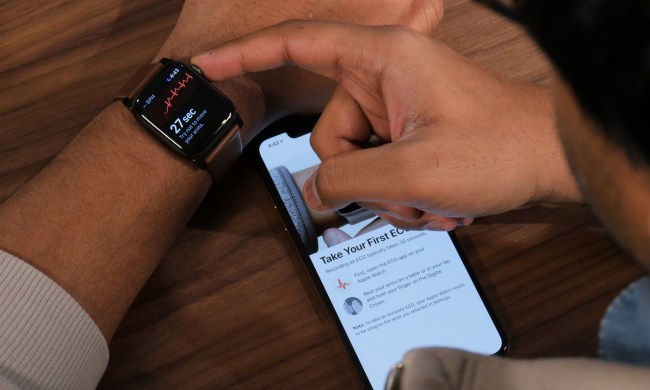Football can be a tough sport — and nowhere more than at its most elite level where highly trained players compete for gridiron glory. There is a lot at stake, and a lot that can go wrong, too. From calls that are tough to make in real-time to the ever-present risk of season-ending injuries, you need a whole lot of eyes on the game to ensure that it runs smoothly.
Hawk-Eye is a company that’s there to lend an automated assist. Used in an ever-growing number of sports, including the NFL, Hawk-Eye’s tech consists of synchronized multi-angle cameras that can help track large numbers of data points on the sports field.
With its cutting-edge technology, it’s able to help call up the right footage at the right moment, supporting the referee’s decision-making processes. And that’s just the beginning of what it’s got planned. No pun intended, but the results are a real game-changer.

“The data we collect is used to enhance the fairness of sport, increase revenue streams and grow fan bases, driving the future of sports entertainment, player welfare, and coaching strategy,” CEO Rufus Hack told Digital Trends. “One example is how we use our SkeleTRACK product in baseball. Baseball teams receive a skeletal output of a 3D skeleton with a corresponding set of constraints for each joint. Teams and/or their respective partners are able to use the Hawk-Eye produced output for further analysis, or utilize the joint positional data to apply their own anatomical modeling.”
Meanwhile, in football — and, around Super Bowl time, that is, after all, a big focus — the company’s technology can help provide the right footage and information to officials to make calls, as well as aid in identifying possible injuries on the field.
Making noise
“We typically shy away from the limelight,” Dan Cash, Hawk-Eye’s managing director for North America, told Digital Trends. “There aren’t many press releases out there about us. We’re not putting up our hands or boasting about [our successes] on social media or in the news world. We see success as being out of the news.”
However, while Hawk-Eye might not place itself into the limelight, it’s nonetheless captured the attention of some of the biggest sports around the world. Its data-driven technology has been used in a variety of innovative ways — from Hawk-Eye being the first company to receive a FIFA soccer Goal Line Technology (GLT) license to its pit-lane officiating and safety system for NASCAR to its use in tennis determining whether a ball is in or out-of-bounds. In 2021, it signed a deal to bring its technology to the NFL with a view to enhancing instant replay capabilities and shortening game delays.

Rufus Hack said: “We are fortunate enough to work with 23 of the top 25 sports federations globally and aspire to continually influence positive change in the sports industry through technology, where our vision-processing, video replay, and creative graphic innovations will truly impact officiating, production, content management, and fan engagement across every sport.”
Hawk-Eye divides its tech into three areas: a Synchronized Multi-Angle Replay Technology system (SMART) that can help capture and review video, TRACK technology for tracking players, balls, and other objects, and innovative INSIGHT tech for extracting and visualizing data from the on-field action.
Hack describes the promise of Hawk-Eye as being to “unlock the power of sport through technology.” Remember that scene at the end of 1999’s The Matrix in which Neo starts to perceive the world on the level of its underlying code? That’s what Hawk-Eye can do for sports — by using its technology to glean insights that may not be visible to spectators.
The data-driven game
On one level, Hawk-Eye’s tech functions so rapidly that many fans may never realize it. If it’s being used to help determine whether a particular point-scoring attempt in a game has been successful, it can greatly increase the speed at which this can be done – thereby reducing bottlenecks in play.
But it can also provide teams with the kind of data they may want to spend their time scouring. For example, Hawk-Eye’s SkeleTRACK technology can track not just the ball in a game, but also the movement of all players on the field – down to the granularity of 18 skeletal points for each player. (That number is set to increase to 29 skeletal points by the end of the second quarter of the year). Information can be captured, processed, and output in under 0.5 seconds. This information could be (and has been) used to create 3D recreations of on-field plays. It can additionally be used to provide coaches with valuable data insights.

“If you look at football, for example, you’ve got wide receivers that are trying to get a step ahead of the quarterback,” Dan Cash explained. “What is it that they can do to maximize their first step to get [the necessary] separation? Then you’ve got the linemen whose job is to make sure that no defensive player gets through them to the quarterback. What is the optimal pose for them to be in? It’s that kind of insight that teams can potentially dive into.”
Data, as the saying goes, is the new oil: One of the most valuable resources available. However, while many are familiar with the way that data drives today’s tech giants, the idea that Big Data is also taking over the sports world is a new one. It’s also one that Hawk-Eye happened to see earlier than most. And there’s more that’s becoming possible all the time.
“We’re in the middle of this journey, I’d say,” Hack explained. “We’ve already been pulling qualitative insights from video for years via our SMART systems, as well as to-the-millimeter tracking across several sports for officiating and data services. There’s definitely still a long road ahead, as we’re constantly challenging ourselves to improve our existing products and to develop new products that truly create impact through insights. The ambition right now is to develop more capabilities off the back of our skeletal kinematic tracking, creating new ways to engage fans for our partners through our graphics and data visualization technologies.”
Coming soon to a sport near you. If it’s not there already.



